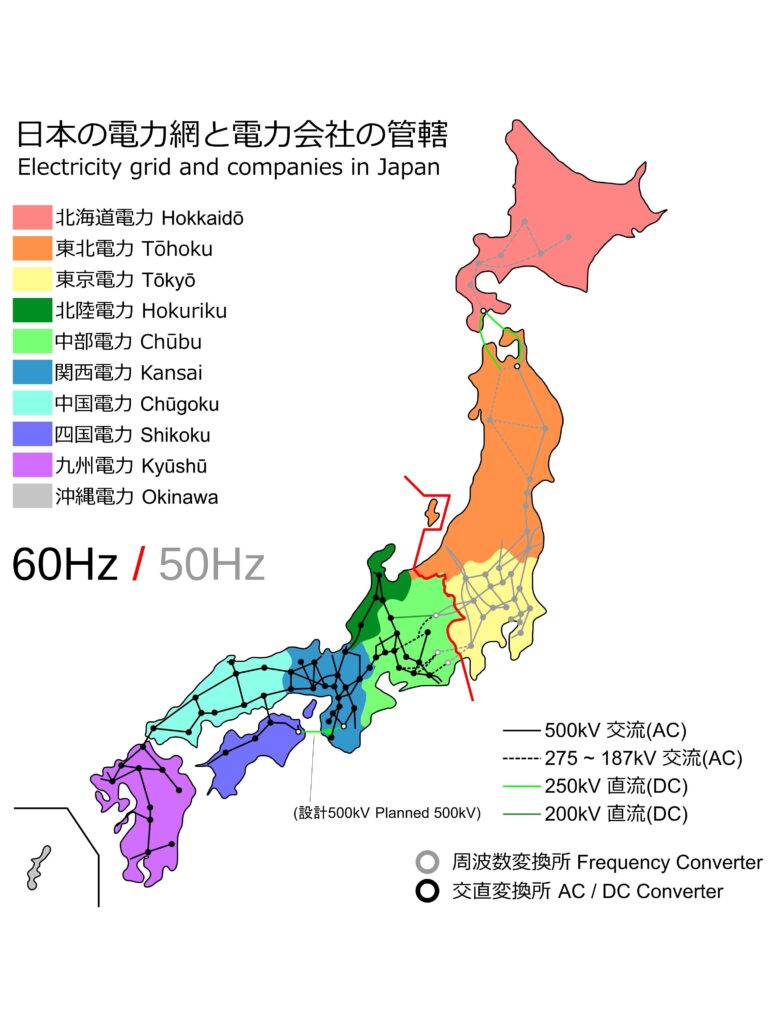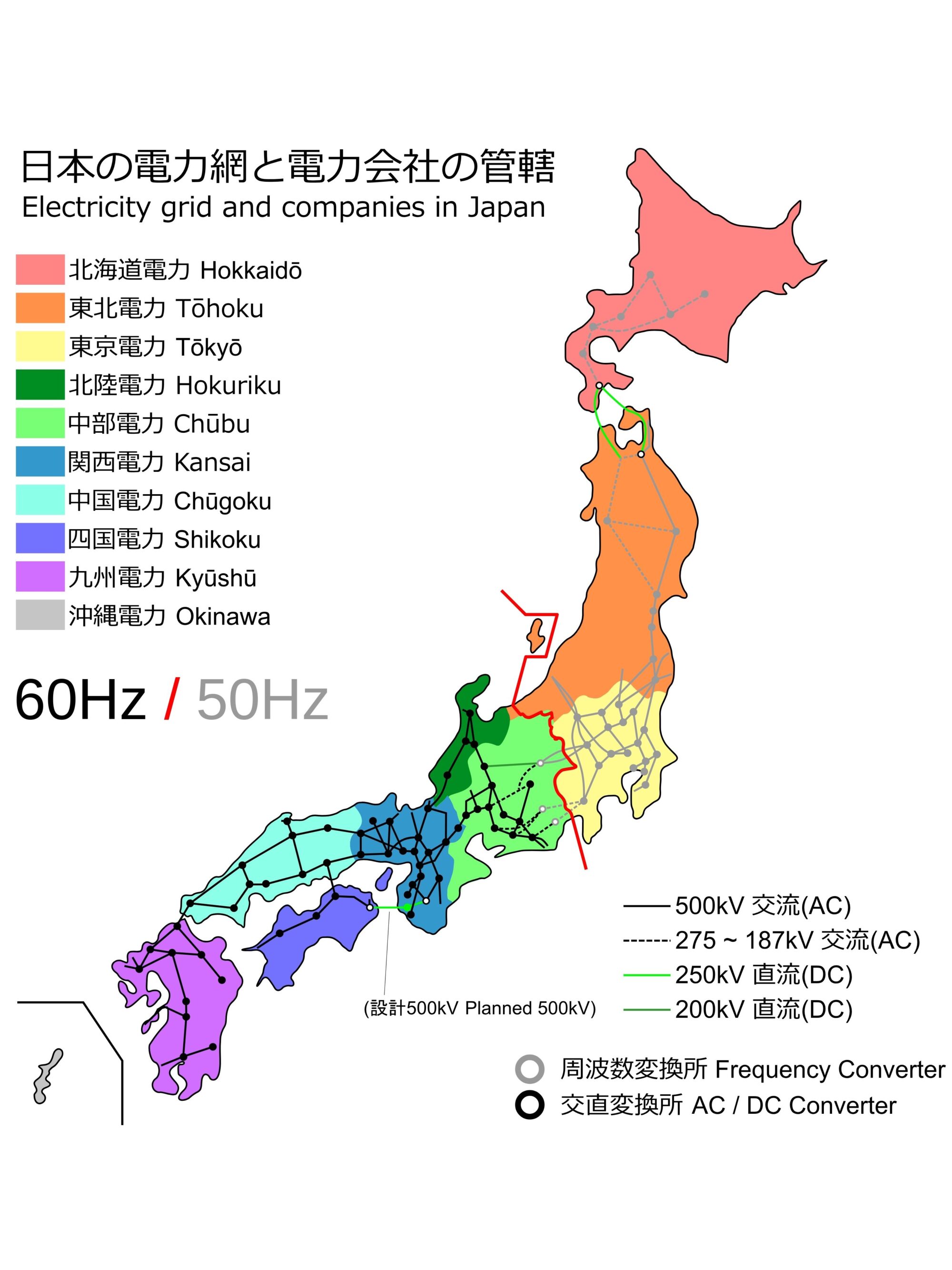
One Country, Two Power Grids
Modern industrial Japan is oddly unique. Two, incompatible power grids deliver energy to the nation, effectively dividing the country into east and west.
When the country opened its borders to the industrial world in the 1860s, two competing infrastructures descended on the country, with Europe focusing on Tokyo in the east, and the U.S. providing equipment to Osaka in the west. Both sides delivered electrical power at 100v (AC), they weren’t compatible. Unfortunately, Europe used 50Hz while the U.S. used a 60Hz system.
AC voltage can easily and efficiently be changed with a device called a transformer. Frequency, e.g. Hertz (Hz), is another matter. AC frequency is determined by the spinning speed of the generator and can’t easily be modified. In Japan’s case, the solution was simple, but limiting. They let one side of the country operate at 50Hz, and the other 60Hz. Japanese electrical appliance manufacturers had to build machines that would run on both frequencies without failing.
This Frankenstein-system performed until the Tōhoku earthquake and tsunami of 2011, when one third of the east’s generating capacity shut down. Excess power from the west couldn’t cross because of the frequency difference. This left extended outages in the east without a quick fix. Since then, more converter stations have been built, but not enough to counter another Tōhoku-sized event.
For international travelers, know that most electronic equipment is rated for “100-220v AC” and “50-60 Hz.” This means that computers, tablets, ebook readers, and smart phones can be plugged in anywhere in the country. However, for devices with heaters or motors (hair dryers, travel irons, curling irons, etc), non-Japanese equipment likely won’t work across Japan’s frequency divide. Consider leaving these items at home and using what is available in your hotel, hostel, or AirBnB
